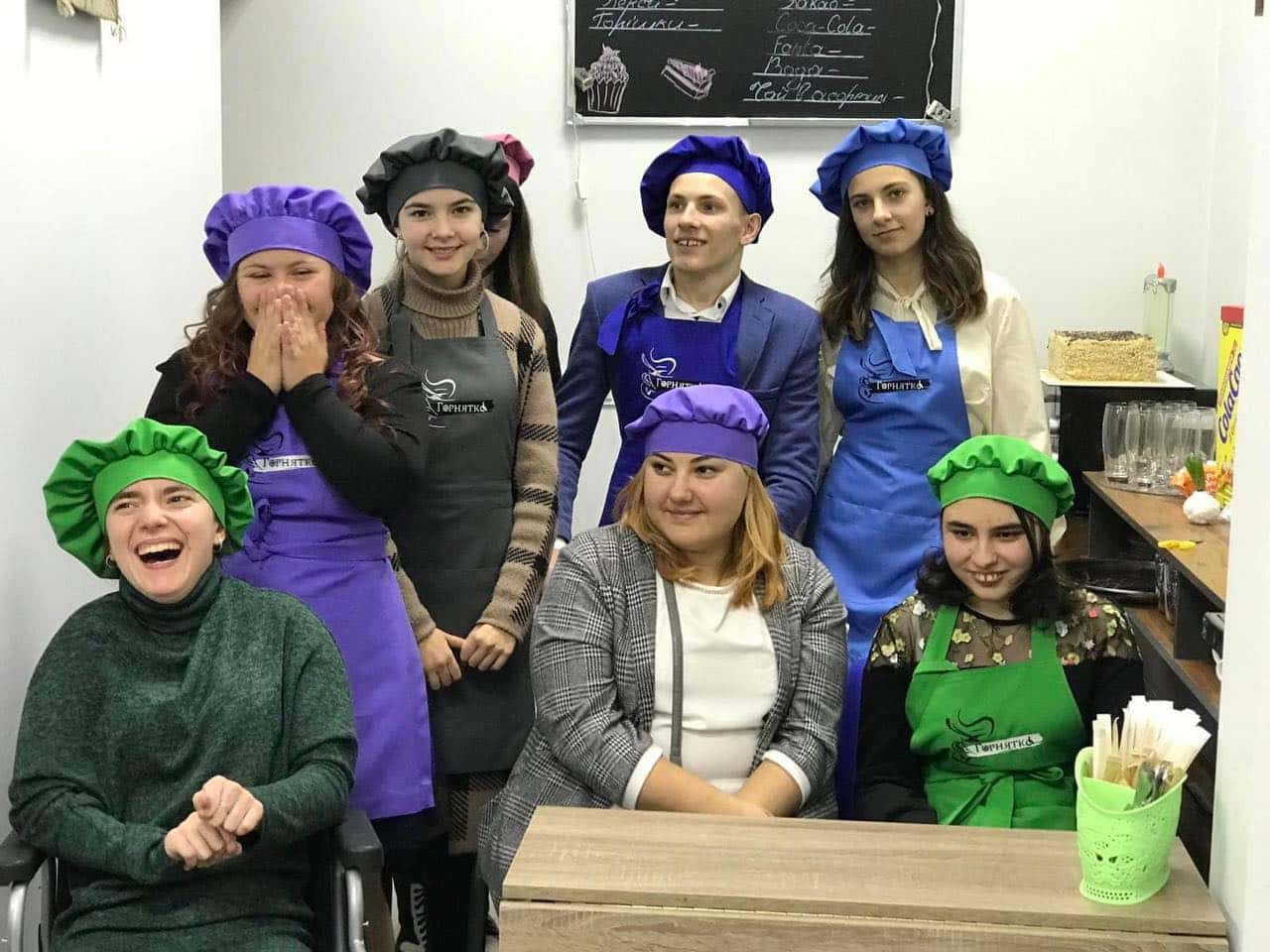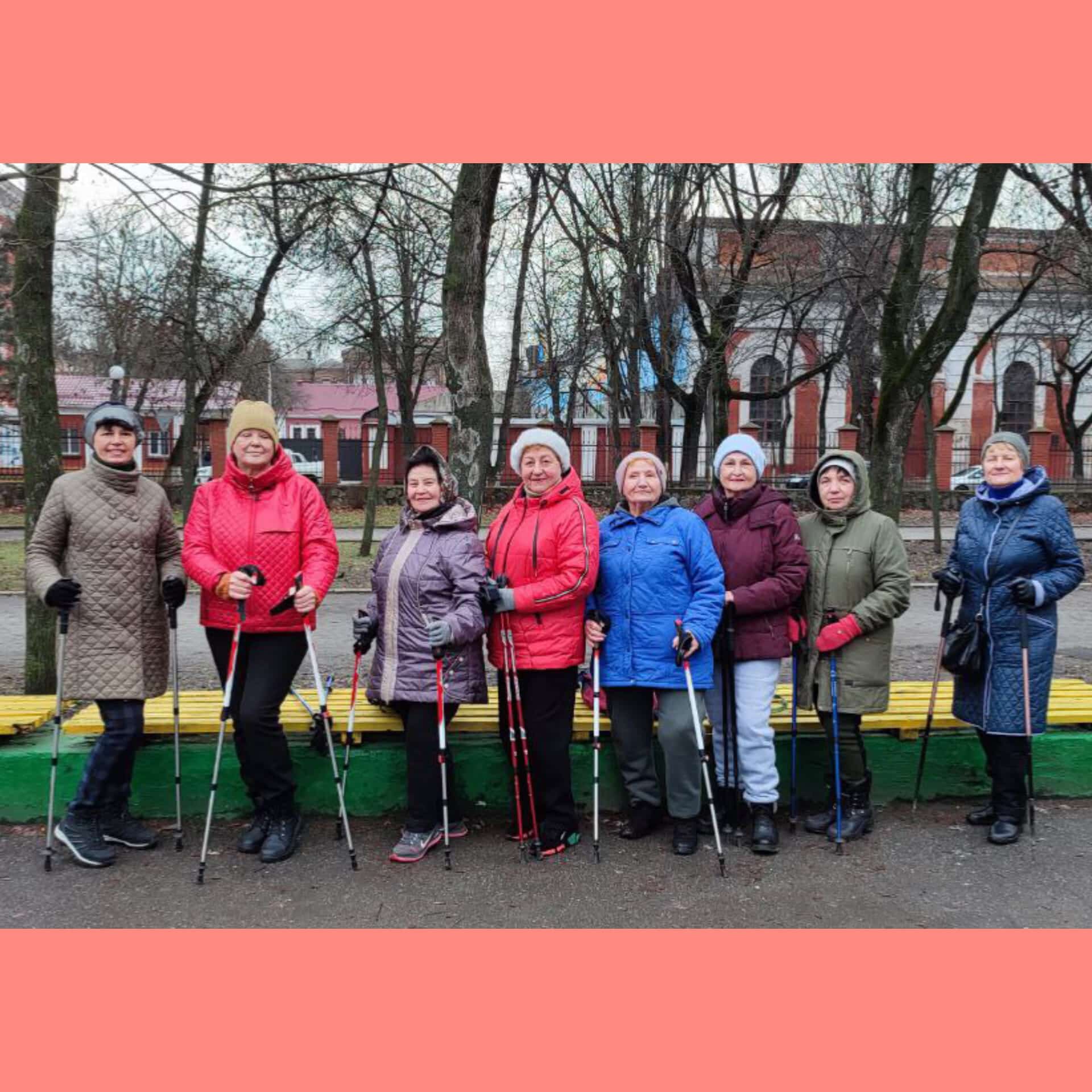War always presents numerous challenges. Perhaps the most important one is to save people’s lives, especially on the battlefield. Medical system is not always capable of responding to all requests that arise as a result of war. Where institutions are slow to respond, benefactors and volunteers come to rescue. Medicine is no exception. Its distinctive characteristic is that it has mainly been women’s fiefdom. In our piece on the history of medical volunteerism you will learn about how it came into being.
How Florence Nightingale’s novel approach changed the rules of the game
Since time immemorial monasteries have been centers of charitable medical aid. Nuns would often assume the responsibility to look after the sick and destitute. Their help was to offer basic care and to pray. It was only in the middle of the 19th century that a more professional approach was adopted, in particular, because of war. In the times of the Crimean War of 1853-1856 sisters of mercy volunteered in field hospitals. The most prominent of them was Florence Nightingale. In 1855 she headed a group of women who volunteered to look after sick and wounded soldiers.
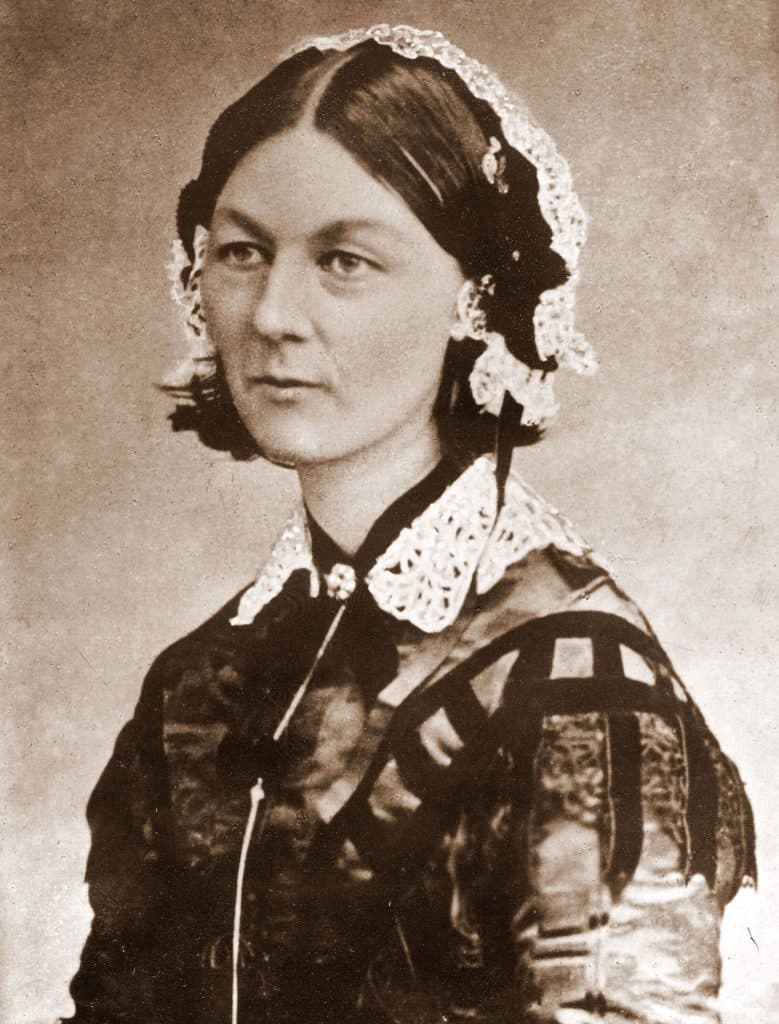
It is thanks to dedicated work of Florence Nightingale that the mortality rate among soldiers and officers significantly dwindled. How did she manage to pull it off? Florence came up with a new approach: cleanliness in hospital rooms, regular ventilation, quality food, quarantine limitations imposed on contagious patients, and professional staff. Also, all complaints of the sick were carefully handled.
The thing we nowadays take for granted was regarded as a novelty in the treatment of the sick back in the 19th century. Such an approach proved also highly efficient. During Nightingale’s work the mortality rate dropped from 42,2% to 2,2%. After the war Florence Nightingale initiated the reform of medical army service in the British empire. Thus, the sanitary situation in the British army took a turn for the better.
Florence Nightingale’s ideas spread thanks to publishing. Starting from the 1850s she wrote a few books about healthcare and nursing. The most famous of them was ‚Notes on Nursing‘. The book became a bestseller and was subsequently translated into many European languages in the 19th century. Recently Florence Nightingale’s complete works (16 volumes) have been published.
In 1860 she realized her educational project by founding the first (in England and one of the first in the world) school for sisters of mercy. This educational course lasted for only a year, but it was quite intensive. Its graduates could count on a good professional reputation in the future. Services of highly skilled nurses were in high demand.
Although nursing began as an exclusively charitable undertaking and selfless serving, Florence Nightingale used to constantly emphasize that the right path to the development of nursing would lie through professionalism with nurses receiving remuneration for their hard work.
However, during the 19th century nursing continued to belong to a domain of unpaid work, especially during war.
What do sisters of mercy and nuns have in common?
Florence Nightingale’s work set an example to be followed in many other countries. Her novel approach to nursing and healthcare during hostilities was especially valuable. For example, in the second half of the 19th century practically every military conflict in Europe featured the involvement of sisters of mercy who would selflessly provide aid for the wounded. They worked mostly under the aegis of the Red Cross Society that was financially supported by philanthropists.
At the end of the 19th and the beginning of the 20th century sisters of mercy had a lot of things in common with nuns. For example, their daily routine was similar. Sisters of mercy were provided for by the community they lived in: they were offered accommodation, food and pocket money. Officially the services that they rendered were free of charge. It was recognized as an important element of Christian virtue and mercy.

Special rules obliged sisters of mercy to do their work with love and gentleness without refusing to do the chores. They used to wear special uniforms, consisting of a brown or gray woolen dress, white apron with a red cross sewn into its upper (chest) part and a white kerchief. When moving about the town sisters of mercy would wear white armbands and would be invariably required to have their special IDs with them.
Usually sisters of mercy were women aged 18-40. As an exception younger women could become members of sister communities. Sisters of mercy were forbidden to get married. Among other things, they were also required to be in good health and literate. Women without education could only hope to be nurses.
In order to become a highly qualified sister of mercy a woman had to take a one- or two-year course on medical care and the specifics of treatment of the sick. They could take a vacation once a year for no longer than six weeks.
Since the end of the 19th century nearly in each big city in Ukraine communities of sisters of mercy have been active. However, it is stretching it to say that medical volunteerism numbered many members. For example, there were only 138 sisters of mercy working in Kyiv in 1903.
WWI: suicides and the personnel crisis
With the beginning of World War I there was an acute need for healthcare workers. Many young women volunteered to join the rank and file of nurses who helped the wounded both at in-patient and field hospitals. In her memoirs ‚Memories of a sister of mercy’ Tetyana Varnek wrote about the work at a hospital in Riga (the hospital was relocated to Latvia from Lviv since the city was recaptured by the Austro-Hungarian army):
‚We were supposed to have no work at night, but surgeries were performed one after another. No sooner had we taken our rest after one surgery, than another one began. Whenever any spare minute presented itself during the day, we would go to the sister room. It was a large cool room at the hospital where six or seven clean stretchers were placed. We would enter the room and drop dead onto the stretchers to take a nap until we were woken up again and fetched upstairs’.
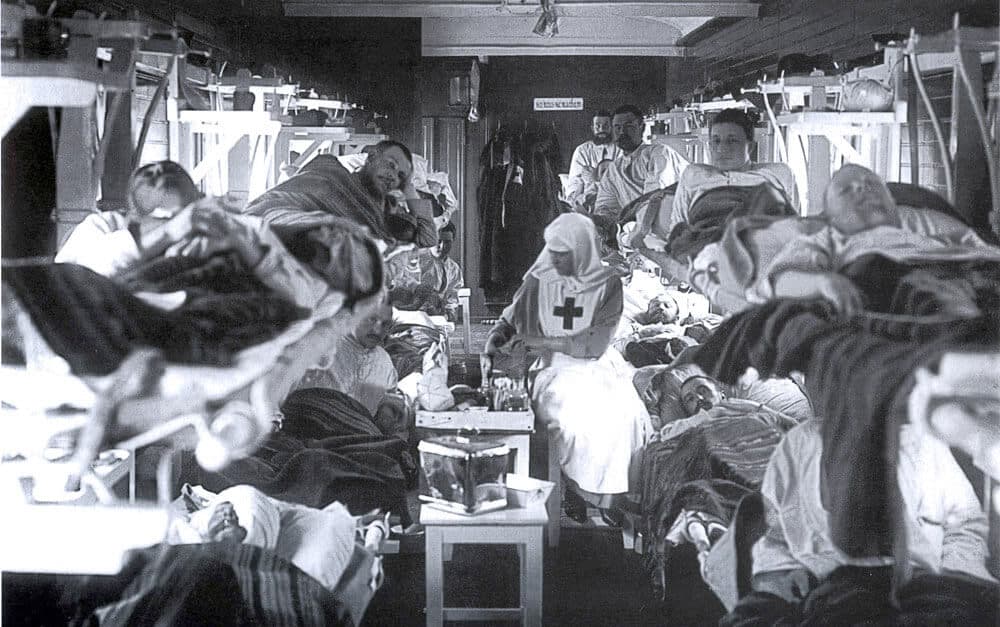
Life in the combat zone was much more difficult. Sisters of mercy lived in tents, kitchens were set up in barracks. They worked 12-hour shifts with one sister of mercy looking after 40-50 sick and wounded soldiers. Therefore, it was not rare that sisters of mercy themselves would die either of infectious diseases or as a result of enemy’s shelling. Suicides were also common.
There was a lack of healthcare personnel, which is why at the beginning of WWI one-year sister of mercy courses were substituted with an intensive 6-week program. Over 2000 women registered for the course in Kyiv alone.
A writer from Kyiv, Zinaida Tulub, wrote in her memoirs ,… I was ashamed of not standing aside from my people’s suffering, of continuing to be something of an upper-class idle loafer. I would leave home every morning heading not for the courses but to the Red Cross building to listen to a lecture or to practice. I took courses on field surgery, microbiology, general therapy, hygiene, etc. Every other day I did a six-hour shift looking after the wounded’.
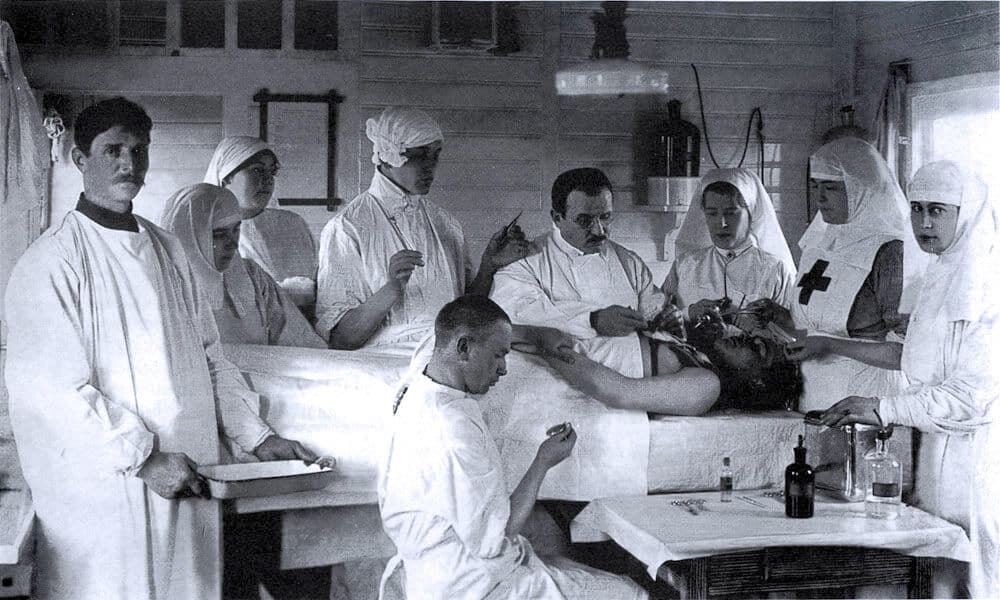
At the beginning of 1917 approximately 100 thousand sisters of mercy were working at the Red Cross Society of the Russian empire alone. Such a scale was possible not only thanks to thousands of volunteers. Many women who had been affected by war joined the rank and file of sisters of mercy. It was at that time that sisters of mercy started to receive per diem allowance of about 2 rubles. This money sufficed to cover basic needs.
WWII: help as a duty
During Soviet times the idea of medical volunteerism and volunteer aid for the sick and wounded was substituted by the duty towards the state. However, it was the Red Cross that came to rescue at the beginning of World War II when the Soviet army was in critical need of skilled healthcare workers. During the war this organization trained 300 thousand nurses and 800 thousand unlicensed assistive personnel. These were mostly young girls who volunteered to carry out dangerous work.
According to official statistical data, during WWII women made up 40% of nursing instructors (military paramedics) and nurses in the Soviet army. It was them who were duty bound to provide first aid to the wounded on the battlefield.
Their main task was to assess the type of wound and its severity as well as to provide first aid and take a wounded soldier from the frontline to a shelter. Moreover, nurses were also ordered to evacuate the wounded together with their ‚rifles or light-machine guns‘.
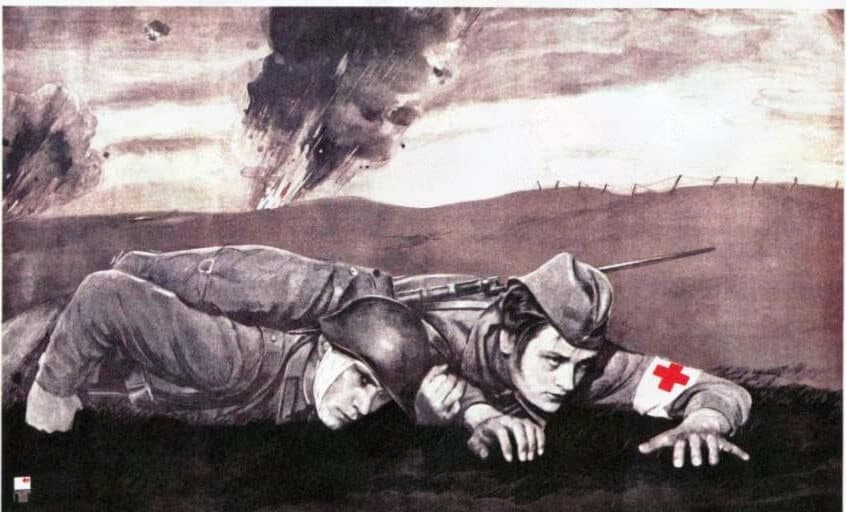
Despite all the difficulties, healthcare volunteers saved the lives of thousands of soldiers. 18-year-old Iryna Levchenko was a shining example of such a volunteer who in the first months of the war helped 168 wounded soldiers escape the battlefield and provided them with first aid. Afterwards in peacetime she was awarded the Florence Nightingale medal by the Red Cross for outstanding achievements in nursing.
Mariya Shcherbachenko was another case in point. In the first years of the war she found herself in the territories occupied by German troops in the Kharkiv region. In 1943 she volunteered as a nurse in the army. Almost immediately the young 21-year-old girl got into the thick of one of the bloodiest battles of WWI, the battle for the river of Dnipro.
During fierce fighting in the period from September 24 to October 4 1943 alone she provided help for 112 soldiers fighting in the battlefield. In her memoirs she wrote, ‚Sisters of mercy are at greater risk on the battlefield than soldiers, since they are supposed to run or creep from one soldier to another being exposed to heavy fire and risking their neck every minute. However, in these moments you don’t fear for your own life, but for those who are bleeding to death. You then realize that your help is absolutely essential since the lives of others depend on it’.
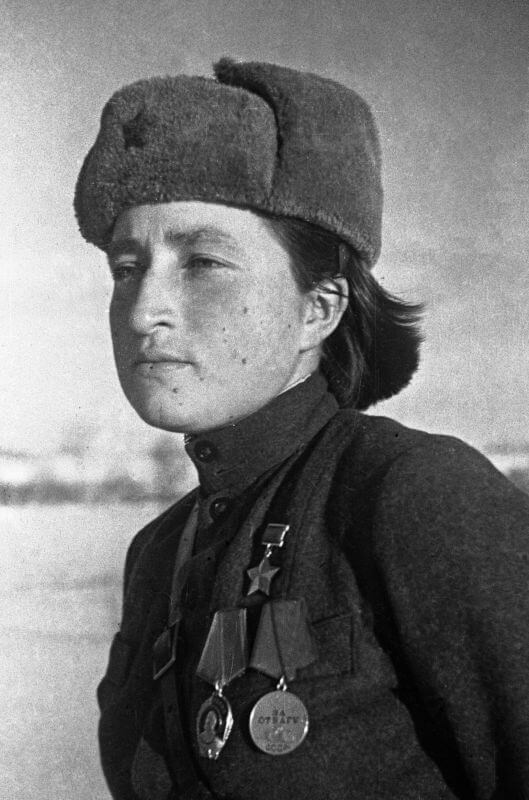
Iryna Levchenko and Mariya Shcherbachenko survived the war and made it to peacetime. However, hundreds of other sisters of mercy and nurses perished on the battlefields. According to official statistics, 71 thousand members of Soviet unlicensed assistive personnel and nurses were killed in WWII.
2014: a new flurry of activity
After the Russia-Ukraine war broke out in 2014 medical volunteerism began actively developing in Ukraine. It had transpired that the country’s army was experiencing a severe lack of trained healthcare workers to be deployed in hotspots of the front. First of all, there were gaps in the provision of emergency assistance and first medical aid as well as in the evacuation of the wounded from the battlefield. This problem was acutely felt by volunteer battalions.
It was then that the first Ukrainian paramedics began their work in Ukraine. Before 2017 there had been no representatives of this profession in the country. Paramedics were trained on the fly. They had to quickly absorb the principles of tactical medicine as well as learn well-defined algorithms of providing aid such as MARCH, TCCC, TECC.
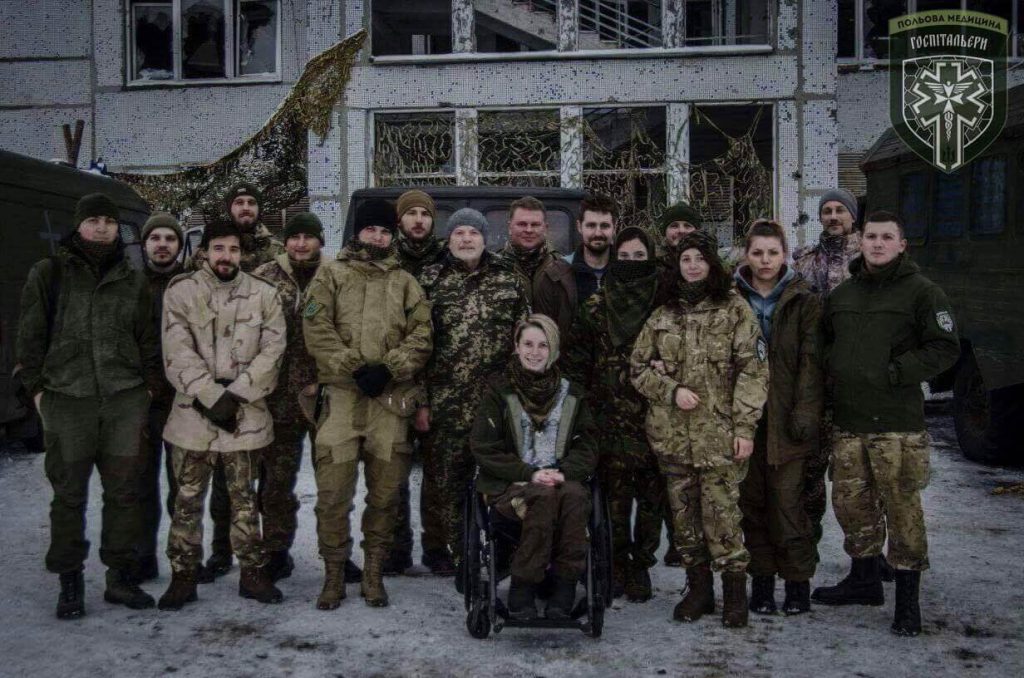
During 2014-2015 a wide range of volunteer initiatives came into being that started organizing provision of medical aid and training of soldiers according to new standards of tactical medicine.
Thanks to the activities undertaken by Hospitallers, White Berets, Mykola Pyrohov First Volunteer Mobile Hospital, Medical Corps, ASAP Rescue Ukraine and the 44th Training Center the lives of hundreds of Ukrainian soldiers have been saved. As of now the vast majority of volunteer medical organizations carry on with their work with other initiatives being launched as well. More than ever they all need comprehensive support.
Everyone can support these organizations through their own involvement or with money since their members are right now engaged in work in combat zones by saving the most precious thing of all – human life.


